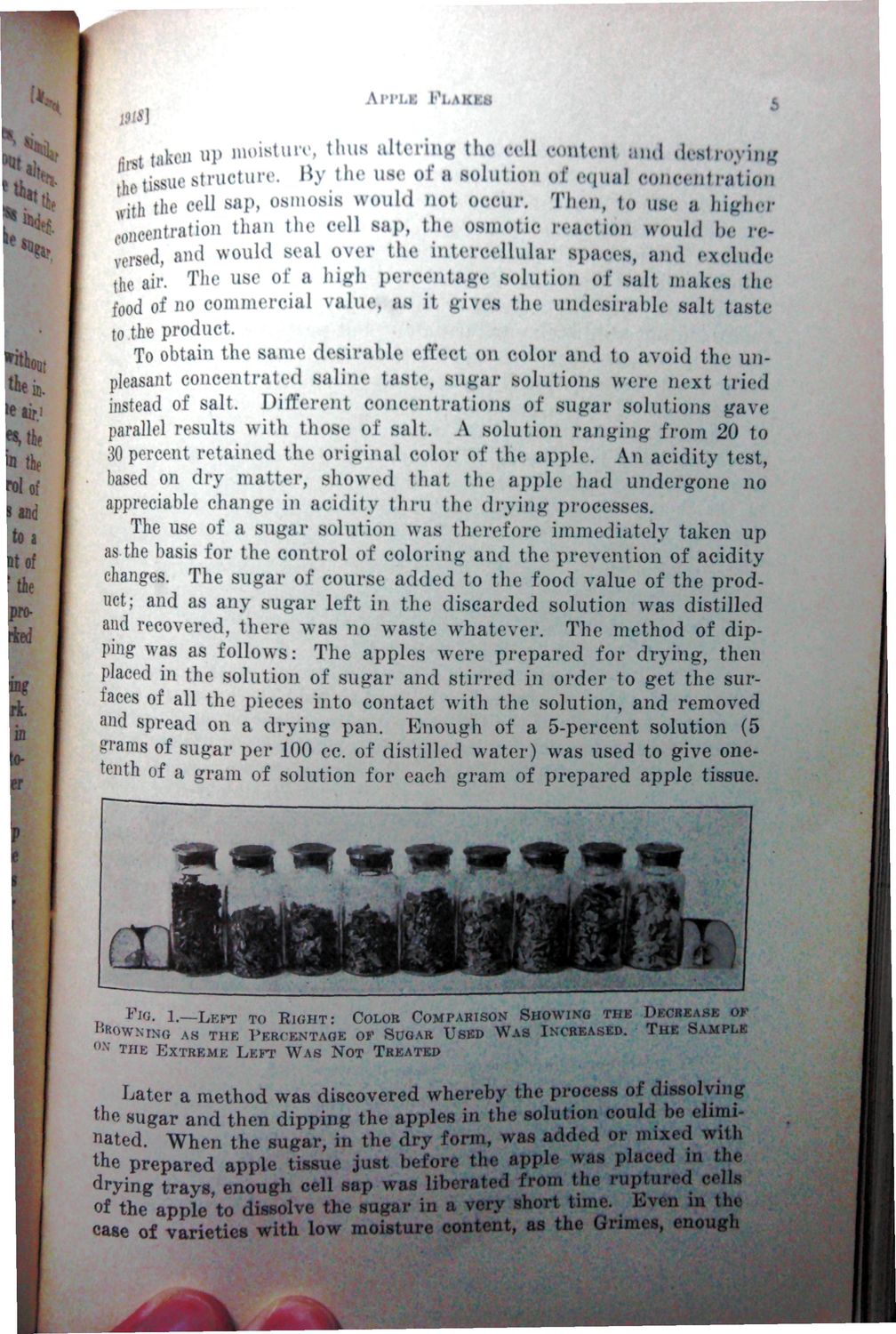| |
| |
Caption: War Publications - WWI Compilation 1923 - Article 35
This is a reduced-resolution page image for fast online browsing.

EXTRACTED TEXT FROM PAGE:
X* Ik * , m*) AlTLK FLAXKll s t taken BP moisture, thus altering the Cell content and destroyj roviiiL' tetissue structure. By the use of a solution of aqua] ooneentrati iith the cell sap, osmosis would not occur. Then, to use a higher concentration than the erll s.ip, tin- osmotic reaction would he re( rsed, and would seal over the mtereellnhir spaces, and exclude ve the a i r The use of a high percentage solution of salt makes the food of no commercial value, as it gives the undesirable salt, taste to the product. To obtain the same desirable effect on color and to avoid the unpleasant concentrated saline last.-, sugar solutions were next tried instead of salt. Different concentrations of sugar solutions gave parallel results with those of salt. A solution ranging from 20 to 30percent retained the original color of the apple. An acidity test, based on dry matter, showed that the apple had undergone no appreciable change in acidity thru the drying processes. The use of a sugar solution was therefore immediately taken up as the basis for the control of coloring and the prevention of acidity changes. The sugar of course added to the food value of the product; and as any sugar left in the discarded solution was distilled and recovered, there was no waste whatever. The method of dipping was as follows: The apples were prepared for drying, then placed in the solution of sugar and stirred in order to get the surfaces of all the pieces into contact with the solution, and removed and spread on a drying pan. Enough of a 5-percent solution (5 Srams of sugar per 100 cc. of distilled water) was used to give onetenth of a gram of solution for each gram of prepared apple tissue. tie in. tetiri to tie s and to a Dtof ? the prorfced rk. in P s r FIG. 1.-—LEFT TO EIGHT: COLOR COMPARISON SHOWING THE DECREASE or DOWNING AS THE PERCENTAGE or SUGAR USED WAS INCREASED. THE SAMPLE 0K THE EXTREME LEFT WAS NOT TREATED Later a method was discovered whereby the process of dissolving the sugar and then dipping the apples in the solution could he eliminated. When the sugar, in the dry form, WBB added or mixed with the prepared apple tissue just before tie appl " placed bn tin drying trays, enough cell sap was liberated from the raptured cells of the apple to dissolve the sugar in a x^y short time E^ m the PAQ* ^ *~-u*A*m with low moisture content, as the Grimes, enough m
| |